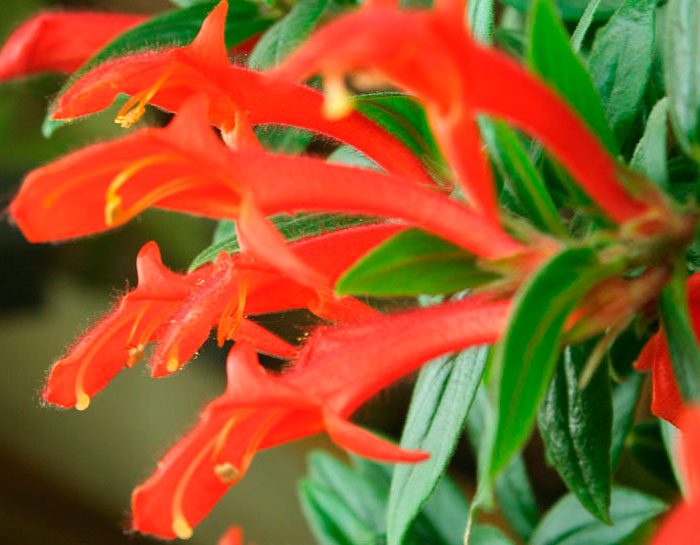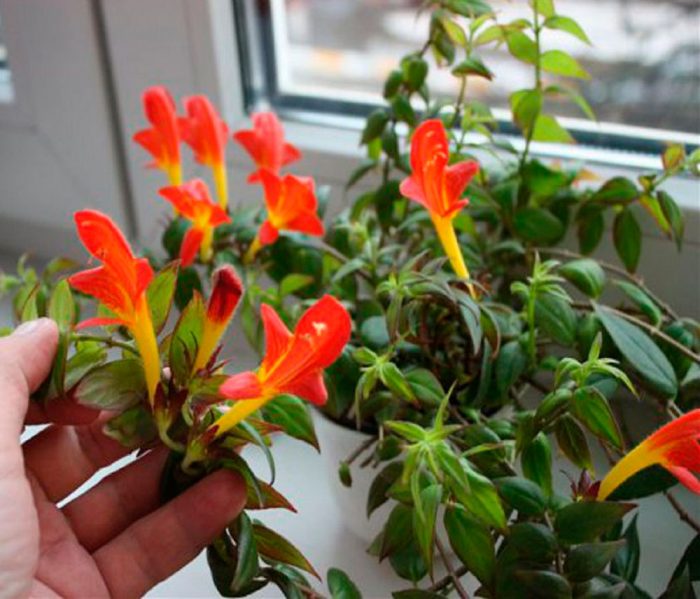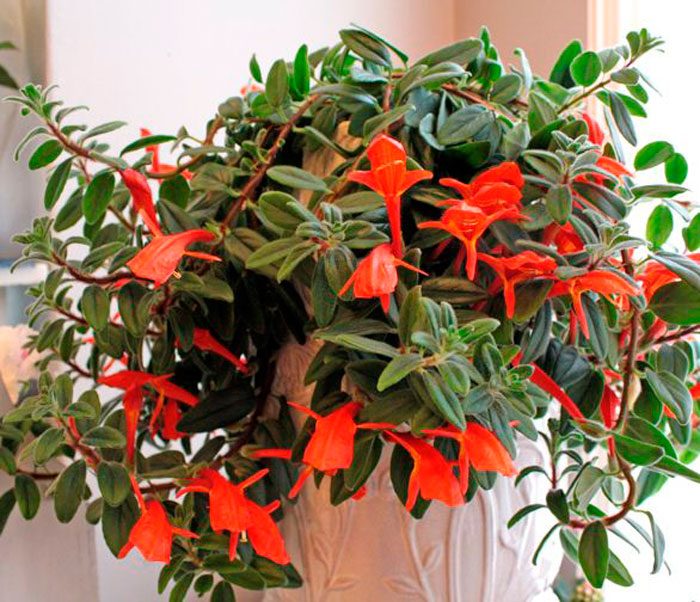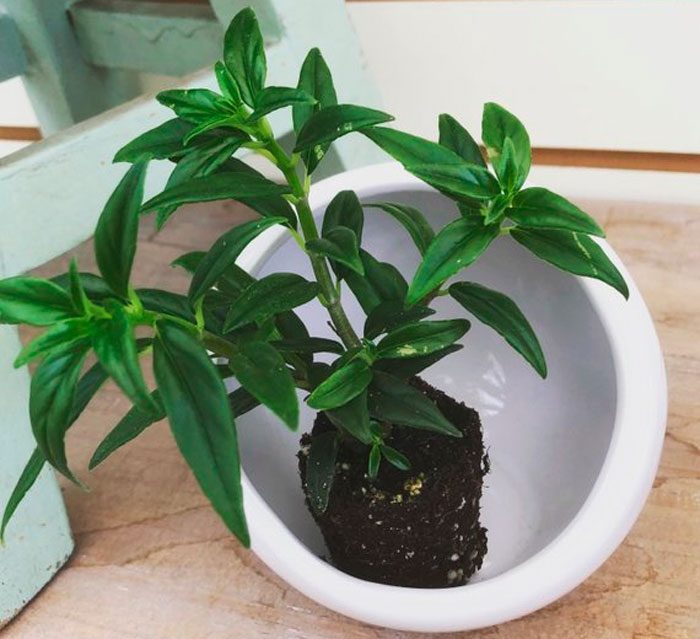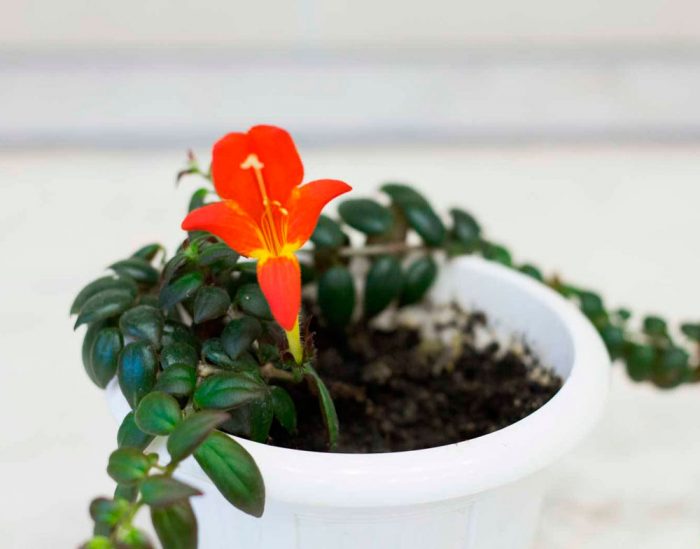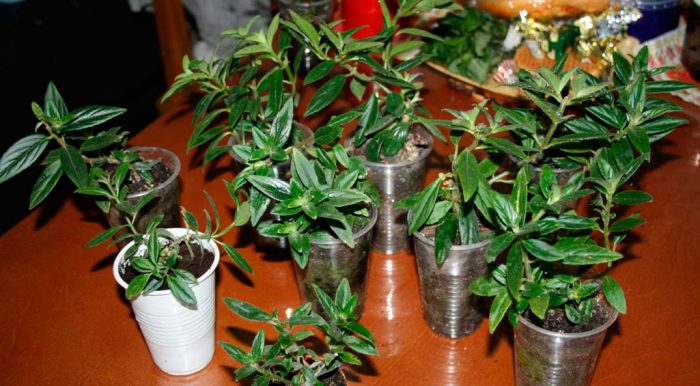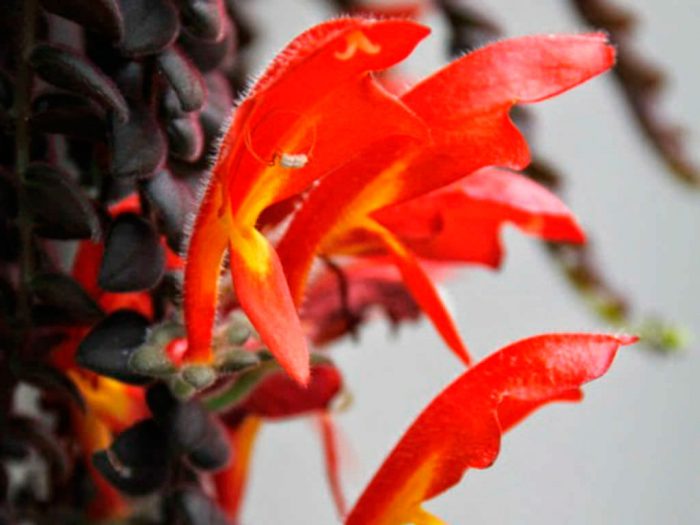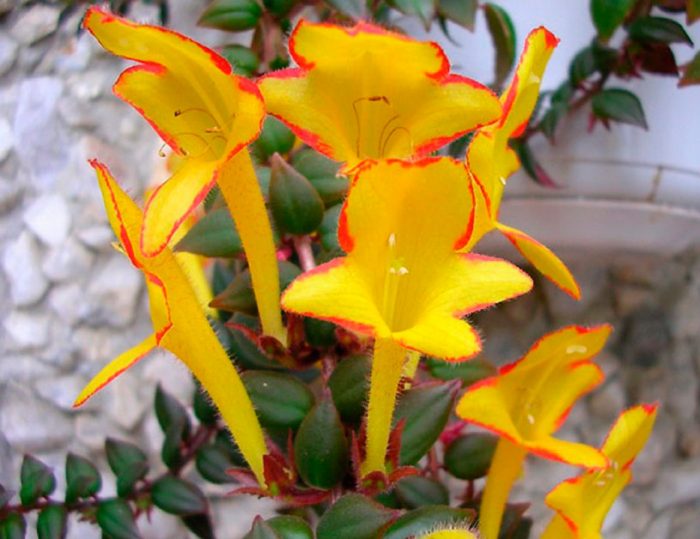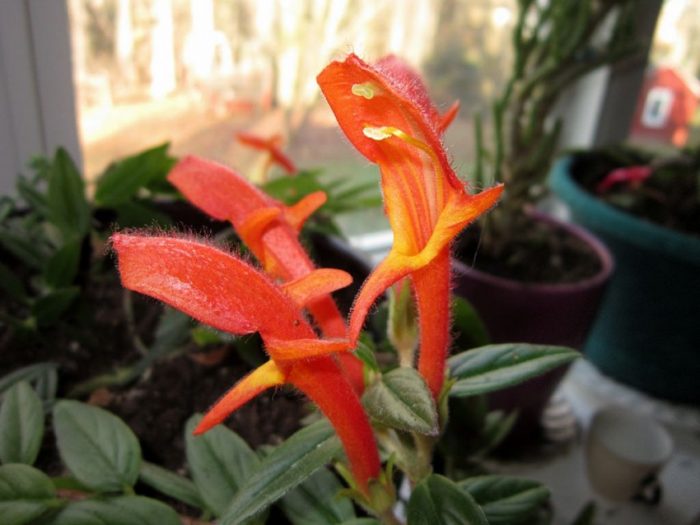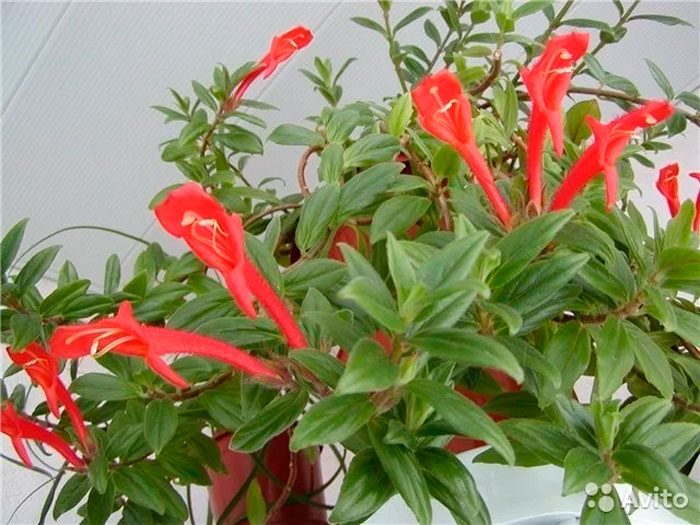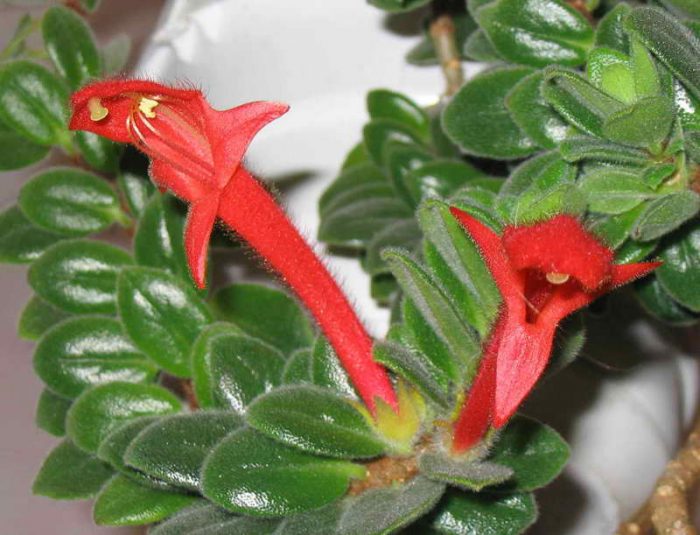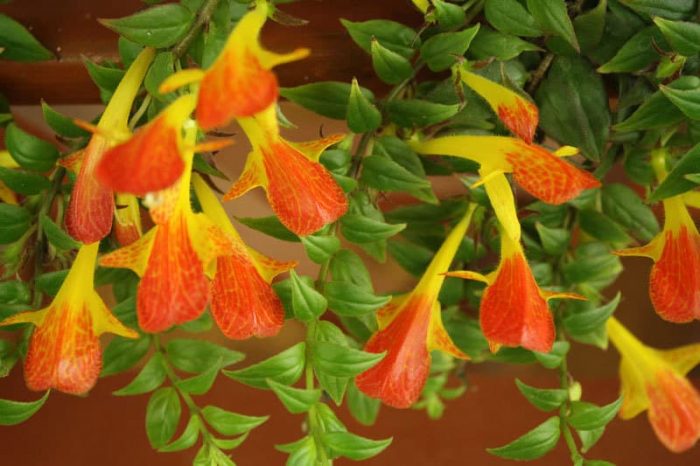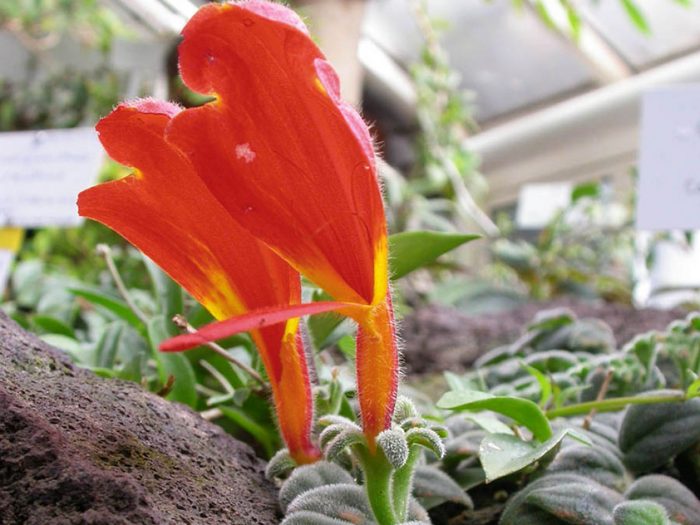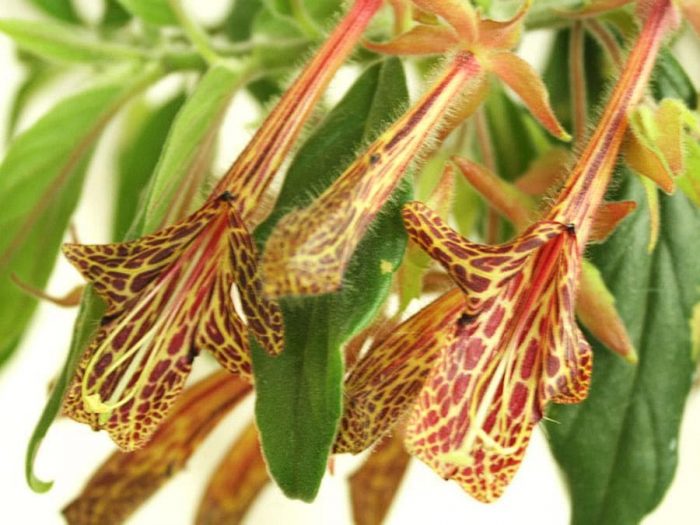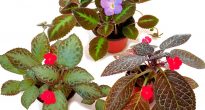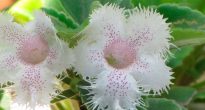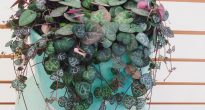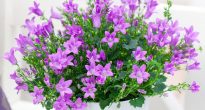The herbaceous perennial ampelous plant of the columnea is part of the Gesneriaceae family. It is distinguished by undemanding care, delicate flowers of rich color, and also lowered stems. Also, the plant is popularly called "goldfish", which is associated with the color and shape of the flowers. Young stems stretch upward, but over time they begin to fall. The vines, although fleshy, are very fragile, their length varies from 80 to 100 mm. Glossy sheet plates can be heart-shaped or oval, they are sharpened to the top. On the surface of the branches of the columnea, you can very often see a dense pubescence of a light color. Foliage in length can reach from 40 to 100 mm. Flowers form closer to the middle of the stem, while they emerge from the base of the leaf axils. Flowers can be colored orange, pink or yellow. The plant blooms in the winter months or in the first spring weeks, because it is at this time in the southern hemisphere that summer.
Content
Columnea care at home
Illumination
Columnaea, growing at home, needs a lot of bright light, which must be necessarily diffused. It is recommended to provide the plant with additional lighting during flowering. Remember that it reacts extremely negatively to direct rays of the sun and drafts, therefore, in the warm season, it is extremely undesirable to transfer it to the street, and they also cannot decorate the veranda, balcony, etc.
Temperature regime
During the spring-summer period, the flower needs warmth (from 23 to 27 degrees). In the room where he stands, it may be even hotter, but only with high humidity. In order to stimulate the intensive laying of new flower buds in the cold season, it is recommended to keep the bush in a cool place (from 16 to 18 degrees).
Watering and humidity
Since in nature this vine grows in the tropics in humid forests, it needs high humidity. This is the most important condition for the successful cultivation of columnea in indoor conditions. In this regard, it is recommended to systematically moisten the flower every day from a spray bottle, you can also use a household humidifier to maintain an optimal level of humidity.Instead, you can take a wide pallet and fill it with large pebbles, then pour water into it, and place a container with a liana on top. Make sure the bottom of the pot does not come into contact with the liquid. Due to this, natural evaporation of moisture will be observed around the plant throughout the day.
For watering and spraying, you must use soft water, which does not contain lime, otherwise the columnea can be very badly damaged or even die. The substrate in the pot is moistened only after its top layer dries. After some time after watering, be sure to drain the water accumulated in the pan.
Columnea transplant
The flower is distinguished by a fragile and very sensitive root system; therefore, it is highly undesirable to transplant it unnecessarily. As a rule, it is imperative to transplant a columnea recently acquired in a store, as well as one whose root system has ceased to fit into the pot. The plant is transplanted by transshipment while preserving a clod of earth, while trying to injure the roots of the flower as little as possible.
Soil mixture
Both young and adult bushes are grown in the same soil mixture. To begin with, a not very high medium-sized flower pot is taken and a good drainage layer is made at its bottom. Only after that is an earthen mixture poured into it. In a specialized store, you can buy ready-made soil mixture, which is intended for semi-epiphytes. If desired, the soil mixture can be prepared with your own hands, for this, 4 parts of leaf and sod soil, 2 parts of peat and 1 part of a mixture consisting of sphagnum, sand and charcoal are combined.
Fertilizer
During the growing season in the warm season, it is recommended to systematically feed the flower; for this, a complex mineral fertilizer is used. A ready-made nutrient mixture for indoor flowering plants, which can be purchased at a specialty store, is perfect. Fertilizer is dissolved in water and applied to the soil during watering. Do not allow the nutrient mixture to come into contact with the foliage.
Pruning
Every year, after the kolumnea has faded, pruning is carried out. It is necessary in order to rejuvenate the vine and maintain its spectacular appearance. If it is not cut off, then after a few years it will be an untidy bush that has lost its attractiveness. In addition, it is necessary to cut off leaf plates, flowers and shoots that have begun to fade in time.
Reproduction methods
Cuttings
Most quickly and easily, the columnea can be propagated by cuttings. Cuttings are harvested in February or March, for this young stems are cut. The length of the segment should be 60–70 mm, remove all sheet plates from it except 4–5 pieces. For rooting, cuttings are planted in a moist soil mixture consisting of a universal substrate and a small amount of peat. Before their roots grow, they are kept in a warm (21 to 24 degrees) and well-lit place. In addition, they need to provide a systematic daily moderate watering, while avoiding stagnation of liquid in the soil mixture. You can find out that rooting was successful by the new pairs of leaf plates that appeared on the cuttings. When this happens, the plants can be planted in individual pots using a soil mixture that is suitable for growing columnea (see above).
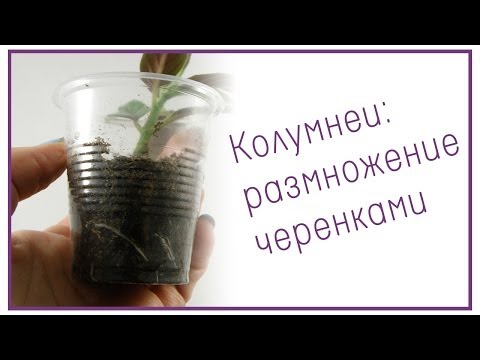

Watch this video on YouTube
Seed propagation
Growing vines from seeds is a more difficult and time-consuming task. If you nevertheless decided on such an experiment, then keep in mind that the seed material of the columnea has a low germination rate, and if the seedlings appear, then most of them may die. Most often, only experienced growers are interested in seed reproduction.
It is recommended to sow seeds in the last days of February, while taking into account that the crops will need greenhouse conditions. Fill a container with a moistened soil mixture of sand and peat, level the surface and distribute the seeds evenly on it. From above they are sprinkled with a thin layer of substrate, the container is covered with a film (glass). Crops should be kept warm (23 to 25 degrees). Remember that they need to be ventilated every day, and the soil mixture is moistened only if necessary. The first seedlings may appear 15–20 days after sowing. As soon as this happens, the container must be rearranged in a well-lit place, reliably protected from direct sunlight. If necessary, illuminate the seedlings with a fluorescent lamp. After 3 or 4 true leaf plates are formed on the seedlings, they will need to be cut into individual pots. You do not need to dive with a columna.
Diseases and pests
If you water the columnea too abundantly, or there will be regular stagnation of water on its stems or in the root system, then gray rot may develop. As soon as the first signs of damage to the plant are found, a number of measures must be taken immediately to save it. Carefully cut out all the affected areas, and then treat the root system and cut sites with a fungicidal solution. Then the bush is transplanted into fresh soil mixture. If the disease is severely neglected, and the entire root system of the bush has rotted, then cut off healthy stems and root them as described above.
Quite rarely, such harmful insects as scale insects, spider mites, aphids and thrips settle on liana. They can be found on shoots and foliage, and they get rid of pests with special insecticidal preparations.
Columnea types with photos and names
There are quite a few types and varieties of columnea, therefore, a description will be given below only of those that are most popular with flower growers.
Columbus Carnival
The bush is decorated with many small leaves of a dark green color. During flowering, spectacular flowers of a deep yellow color are formed on the plant, on the petals of which there is a neat red border.
Columbus Allen
This spectacular herb is decorated with bright red flowers. A characteristic feature of this species is the fast-growing stems that create long vines.
Columnea Krakatoa
Shoots are covered with small dark green leaf plates, as well as rich reddish-orange flowers.
Blood Red Column
The stems of this species are thickened, and the foliage is large. During flowering, beautiful red flowers appear. There are red spots (in the form of streaks) on the seamy surface of the leaf plates.
Columbus Banks
The length of the stems of such a plant is about 100 cm; small greenish leaf plates and flowers of a yellowish-orange color grow on them.
Columney the Glorious
A distinctive feature of this variety is considered to be fleshy leaf plates, on the surface of which there is pubescence.
Columbus Shida
Such a columnea differs from other species in that a pile of pale red color is present on the surface of long fleshy stems, and it is also present on the seamy surface of the foliage. The flowers are located along the entire length of the stems and are yellow in color.
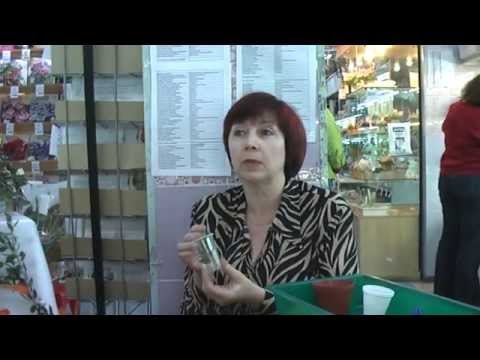

Watch this video on YouTube

